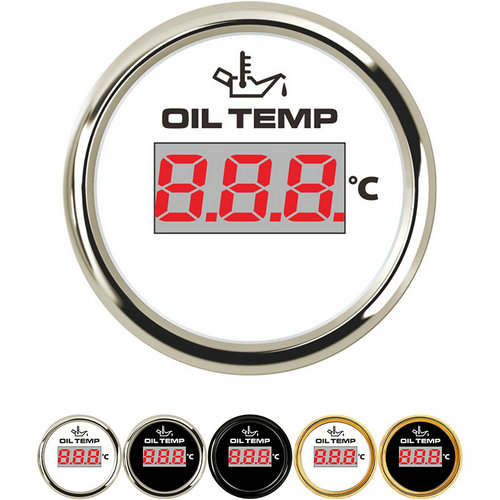oil temperature gauge function
The car oil temperature gauge function generally refers to the engine oil temperature. The oil temperature has a certain reference for the normal operation of the engine. If the oil temperature is too high or too low, it will affect its lubrication effect, which will directly affect the normal operation of the engine.
The working principle of the oil meter: If the oil level fluctuates when the car moves according to Ohm's law, why can it still be measured? The measurement is the time value; that is, the instantaneous value. It is related to the buoyancy of the float.
Float measurement: The oil float floats on the oil surface by buoyancy. The position of the float is the position of the liquid level. Knowing the height of the liquid level, you can know the volume of oil in the oil storage tank through the shape of the oil tank. In other words, it is a sliding rheostat, the oil level is different, the height of the float is also different, and the resistance value of the sliding rheostat connected with the oil float is different. volume, performance data to the car dashboard.
The oil float in the actual fuel tank is a sliding variable resistor, which floats under the oil float to change the resistance in the circuit, and then reflects it through the oil gauge pointer on the instrument. The oil float itself is a sliding rheostat. According to the decrease of the oil level in the mailbox, the input resistance of the float increases, so that the input voltage will decrease in response, and the instrument will decrease accordingly.
Oil temperature gauge function:The oil temperature gauge indicates the temperature of the coolant, but it also tells you the temperature of the engine. After all, the coolant is used to cool the engine, so the engine cannot work properly if the oil temperature is too high, and if the oil temperature is too low, the fuel consumption is high. An important factor, antifreeze not only has antifreeze cooling effect, it also has the effect of keeping your engine warm. Generally, the oil temperature is about 80 degrees, which is normal, and it will be slightly lower in winter. If the oil temperature exceeds 90 degrees and does not drop, you must stop immediately, turn off the flame, and check. The engine coolant temperature gauge is used to indicate the temperature of the engine coolant, and the coolant temperature signal is provided by the engine coolant temperature sensor mounted on the engine cylinder head. the cooling fan runs at high speed, and the engine coolant temperature When the temperature is lower than 101°C, the cooling fan stops; when the engine coolant temperature reaches 89°C, the thermostat is partially opened, and when the engine coolant temperature reaches 101°C, the thermostat is fully opened. If the engine coolant temperature reaches or exceeds 112°C, the coolant temperature warning light is on. At this time, stop the engine immediately and turn off the engine, and check the coolant level and cooling pipeline.
 English
English 



Get a Quote / Info